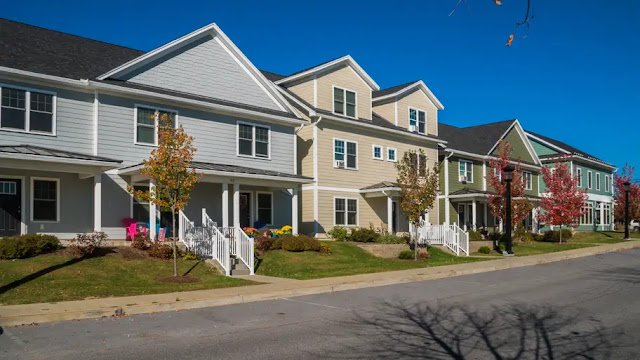HomeReady Mortgage Guide
Key Takeaways:
- A conventional HomeReady mortgage type only requires a 3% down payment. It can be used to refinance an existing mortgage or to purchase a house.
- To be eligible, your income must be at most 80% of the local median income.
- The 3% down payment requirement can be satisfied with grants, gifts from friends and family, and other financing sources. Rental income is another item you can include on your loan application.
What is a HomeReady mortgage?
One kind of conventional loan that assists lower-income borrowers in purchasing homes is the HomeReady mortgage. Your income must be at most 80% of the area's median income to be eligible to buy.
A HomeReady loan's primary attraction is its minimal down payment requirement, which is only 3% of the house's purchase price. There are several ways to fund that down payment, including grants and gifts from friends and family.
Mortgage lenders provide the funding for HomeReady loans, guaranteed by the government-sponsored enterprise (GSE) Fannie Mae. Your lender will handle both the mortgage application and closing.
"For HomeReady borrowers whose incomes are 50% or less of their respective area median incomes, Fannie Mae provides a $2,500 credit. You can use this credit to cover closing costs or your down payment. It applies to loans closed between February 28, 2025, and March 1, 2024."
Terms for HomeReady loans
A HomeReady loan is typically a 30-year fixed-rate mortgage. Still, it can also have terms of five, seven, or ten years adjustable-rate in addition to fixed-rate mortgages with terms of ten, fifteen, and twenty years.
Types of HomeReady Loan Property
A HomeReady mortgage can be used not only for purchasing a property but also for refinancing.
It is limited to primary residences or the house you occupy. It applies to single-family homes and qualified cooperative, condo, and manufactured homes. Additionally, you can use it to purchase a duplex, triplex, or four-unit building, but only if you intend to make one of those units your primary home.
Who qualifies for a HomeReady Loan?
To be eligible for a HomeReady mortgage, you must:
- A minimum credit score of 620
- A three per cent down payment
- Income that is 80% or less of the area median income (AMI); you can use this tool to determine the local AMI limits.
- A maximum debt-to-income (DTI) ratio of 45% (or, depending on the situation, up to 50%)
- If this is your first home purchase, you must also finish a homebuyer education course. However, you don't have to be a first-time customer.
Nevertheless, according to Fannie Mae regulations, you are only allowed to own one additional financed property in addition to the one you are purchasing.
Even if your credit score is below 620 or you have other "nontraditional credit" types, you may still be eligible for a HomeReady loan. To find out your options, speak with your loan officer.
Benefits of HomeReady Mortgages
The following are a few advantages of a HomeReady loan:
- Minimal down payment: Only 3% of the total needed for a HomeReady mortgage must come from personal savings. For instance, gifts from friends and family can count toward the 3% requirement.
- Diminished mortgage insurance: If you put less than 20% down on a conventional loan, you must pay mortgage insurance premiums. If a borrower puts less than 10% down, the HomeReady program lowers these premiums. On top of that, after you've paid down 20% of the value of your house, you can ask to have the premiums cancelled.
- Rental income on your application: You can list rental income as one of your qualifying sources of income when you apply for a HomeReady loan. For example, you could include that income on your loan application if you purchase a duplex and rent out the other unit.
FHA vs. HomeReady loans
One kind of mortgage with a low down payment is the HomeReady loan. Moreover, the minimum down payment for an FHA loan is less. This is how they contrast:
"Like HomeReady, Home Possible is supported by Freddie Mac instead of Fannie Mae. These two loans are intended for borrowers with lesser incomes. The main distinction is that a credit score of at least 660 is required for a Home Possible loan if you purchase a single-family home at a fixed rate. With a HomeReady mortgage, you can buy the same kind of house with a credit score as low as 620."




0 Comments